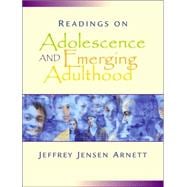
Note: Supplemental materials are not guaranteed with Rental or Used book purchases.
Purchase Benefits
What is included with this book?
| Preface | ix | ||||
| PART I Introduction, History, and General Issues | |||||
|
1 | (5) | |||
|
|||||
|
|||||
|
6 | (11) | |||
|
|||||
|
|||||
|
17 | (16) | |||
|
|||||
|
|||||
| PART II Biological Foundations | |||||
|
33 | (7) | |||
|
|||||
|
|||||
|
40 | (20) | |||
|
|||||
|
|||||
|
|||||
|
|||||
|
|||||
| PART III Cognitive Foundations | |||||
|
|||||
|
51 | (60) | |||
|
|||||
|
|||||
|
|||||
|
|||||
|
|||||
|
60 | (9) | |||
|
|||||
|
|||||
|
|||||
| PART IV Cultural Beliefs | |||||
|
69 | (15) | |||
|
|||||
|
|||||
|
|||||
|
|||||
|
84 | (11) | |||
|
|||||
|
|||||
|
|||||
| PART V Gender | |||||
|
95 | (6) | |||
|
|||||
|
|||||
|
101 | (10) | |||
|
|||||
|
|||||
| PART VI The Self | |||||
|
111 | (9) | |||
|
|||||
|
|||||
|
|||||
|
|||||
|
|||||
|
120 | (13) | |||
|
|||||
|
|||||
|
|||||
| PART VII Family Relationships | |||||
|
133 | (9) | |||
|
|||||
|
|||||
|
|||||
|
|||||
|
142 | (9) | |||
|
|||||
|
|||||
|
|||||
|
|||||
|
|||||
| PART VIII Friends and Peers | |||||
|
151 | (10) | |||
|
|||||
|
|||||
|
161 | (12) | |||
|
|||||
|
|||||
|
|||||
|
|||||
| PART IX Dating, Love, and Sexuality | |||||
|
173 | (12) | |||
|
|||||
|
|||||
|
185 | (14) | |||
|
|||||
|
|||||
|
|||||
| PART X School | |||||
|
199 | (11) | |||
|
|||||
|
|||||
|
|||||
|
210 | (9) | |||
|
|||||
|
|||||
|
|||||
| PART XI Work | |||||
|
219 | (13) | |||
|
|||||
|
|||||
|
|||||
|
|||||
|
232 | (9) | |||
|
|||||
|
|||||
| PART XII Media | |||||
|
241 | (9) | |||
|
|||||
|
|||||
|
|||||
|
250 | (11) | |||
|
|||||
|
|||||
|
|||||
| PART XIII Problems | |||||
|
261 | (12) | |||
|
|||||
|
|||||
|
273 | (10) | |||
|
|||||
|
|||||
|
|||||
|
|||||
|
|||||
|
|||||
| Index | 283 |
The New copy of this book will include any supplemental materials advertised. Please check the title of the book to determine if it should include any access cards, study guides, lab manuals, CDs, etc.
The Used, Rental and eBook copies of this book are not guaranteed to include any supplemental materials. Typically, only the book itself is included. This is true even if the title states it includes any access cards, study guides, lab manuals, CDs, etc.